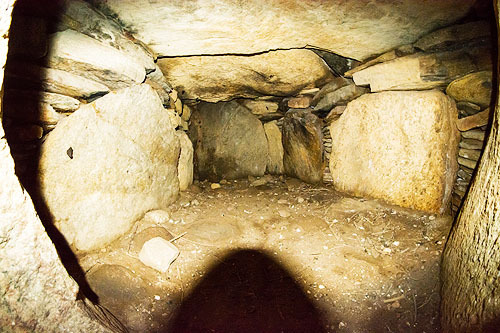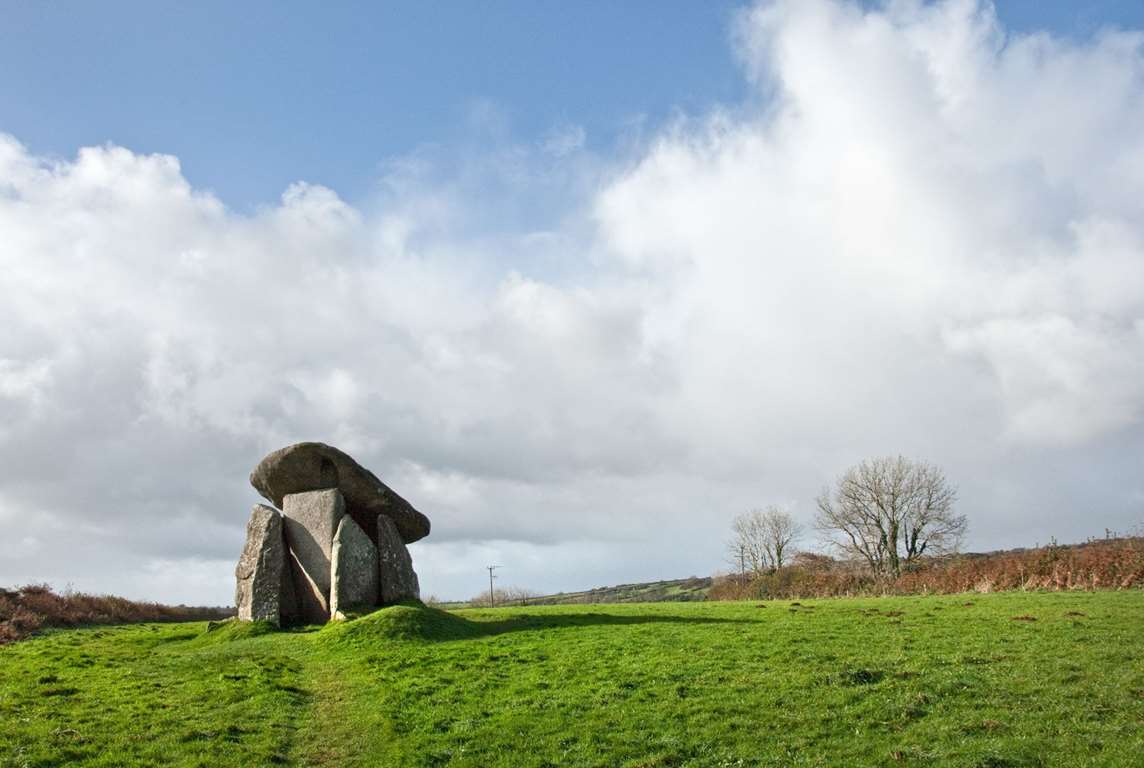#dolmen
The Valdecañas reservoir in #Spain has revealed the #Dolmen of #Guadalperal which dates back 4-5 thousand years.
The dolmen consists of 150 granite stones, called orthostats, placed in a vertical arrangement to form an ovoid chamber 5 metres (16 ft) in diameter. They are preceded by an access corridor about 21 metres (69 ft) long and 1.4 metres (4.6 ft) wide. At the end of the corridor, at the entrance of the chamber, there is a menhir about two meters high that has a #snake carved and several cups. These figures may have served as protection for the site. The chamber, of the anta type,[clarification needed] a common construction in the west of the Iberian Peninsula, consists of 140 stones and was covered with a mound of earth and gravel. It is surrounded by another circular ring that contained the upper mound.
According to the latest research, the menhir carved with an elongated and wavy engraving is believed to be a representation of the Tagus #River as it passes through the area.[citation needed]
The monument was discovered in 1926, during a research and excavation campaign led by the German archaeologist Hugo Obermaier between 1925 and 1927. It could have been a solar temple, and also been used as a burial enclave. Roman remains found there – a coin, ceramic fragments and a grinding stone – indicate that at that time it was safely preserved from looting. Eleven axes, ceramics, flint knives and a copper punch were found in a nearby dump. A settlement was also found, dating to the time of construction, which presumably housed the builders. Obermaier discovered houses, charcoal and ash stains, pottery, mills, and stones to sharpen axes.[2]
Source: https://youtube.com/watch?v=trefVTVsLdQ

Красная поляна. Дольмен. | Krasnaja Poljana. Dolmen.
#dolmen #stones #russia... this one is especially for @Jakobu, and oc for all dolmen lovers...

Le second dolmen de la nécropole de Tustrup (Danemark) n’a pas été restauré.
Il a perdu sa dalle de couverture, ainsi que l’un de ses six orthostates d’origine.
Il possédait un couloir d’accès à la chambre funéraire, recouvert par deux dalles de couverture.
L’on peut remarquer que la pierre de seuil est toujours en place à l’entrée de la chambre. #Histoire #Stonehenge #CivilisationNéolithique #Mégalithe #Dolmen #MichelRouvère
Cliquez sur le lien pour voir la suite des articles de la semaine sur mon blog : http://michelrouvere.over-blog.com/tag/neolithique/

Dans le coin sud-ouest de la chambre principale de la sépulture à couloir de la nécropole de Tustrup (Danemark) s’ouvre un étroit passage vers une chambre secondaire.
Elle était sans doute réservée à l’inhumation des membres de la famille royale. 👑
Au total, 40 mégalithes ont été utilisés pour construire le monument, dont le plus lourd pèse 20 t. #Histoire #Stonehenge #CivilisationNéolithique #Mégalithe #Dolmen #MichelRouvère
Cliquez sur le lien pour voir la suite des articles de la semaine sur mon blog : http://michelrouvere.over-blog.com/tag/neolithique/
Trethevy Quoit is a particularly well-preserved example of a portal dolmen, a type of monument once common in Cornwall and dating to the early or middle part of the Neolithic period, around 3500–2500 BC.

III millenium a.c.
by antonuraghe
è uno spettacolo, il dolmen più importante della Sardegna ma pare anche a livello del mediterraneo. Tra Mores e Ittireddu.
there's a lot more in this photo pool...
#Sardinia #dolmen #stones #history... @ramnath@nerdpol.ch @108madhuri@nerdpol.ch

Trethevy Quoit from the South The problem with this is that we don't know its complete history. Is that hole in the capstone an original feature? What we do know is that someone once used it to hold a flagpole.
Trethevy Quoit, Cornwall, England
Trethevy Quoit is a well-preserved Neolithic dolmen tomb, known locally as ‘The Giant’s House,’ located between St. Cleer and Darite in Cornwall, England. It was erected during the Neolithic period between 3700-3500 BC. Like other portal tombs of this type, Trethevy Quoit was originally covered by a mound. At the upper end of the cover slab is a natural hole, which may have been used for astronomical observation.
(Source: commons.wikimedia.org)


 Dolmen (St Michel de Grandmont)
Dolmen (St Michel de Grandmont)



